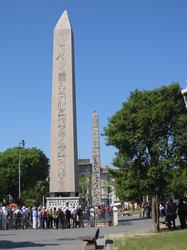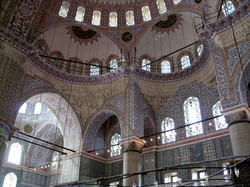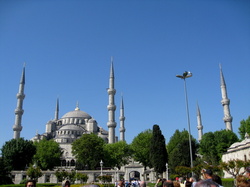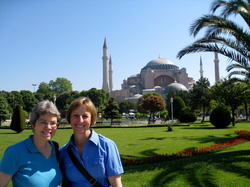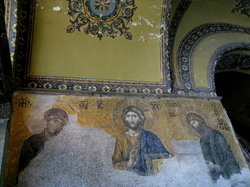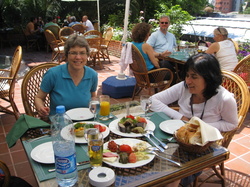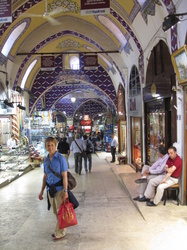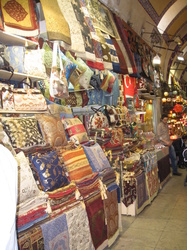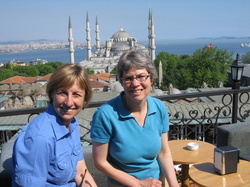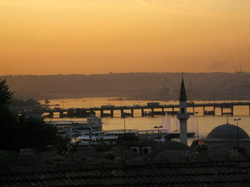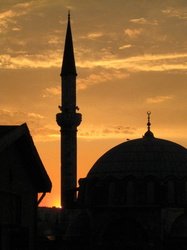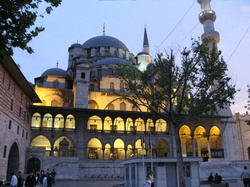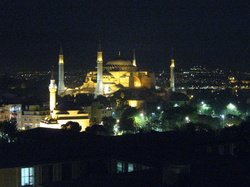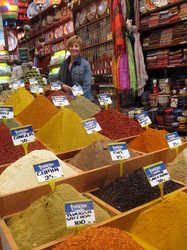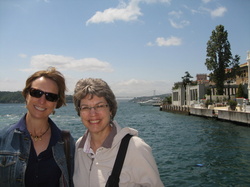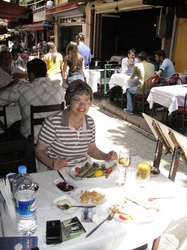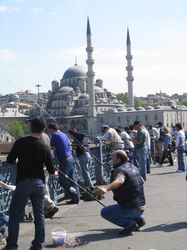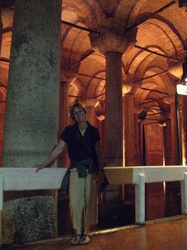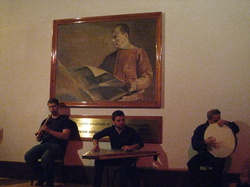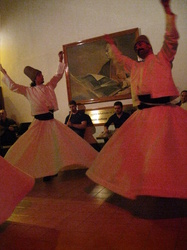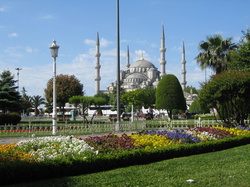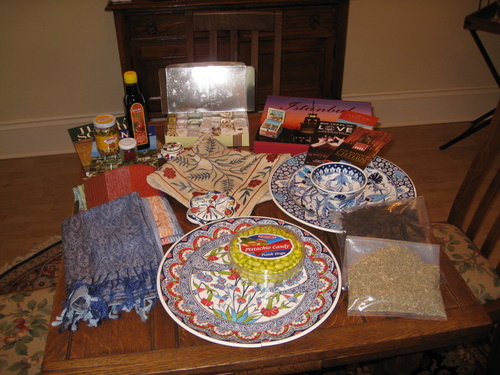Istanbul, Turkey- May 2009
May Bank Holiday weekend had us journey to Istanbul for an amazing four day Holiday. We arrived around 5:00 PM Friday evening (four hour flight from London, two hour time change, one hour delay) just in time to check into our hotel and head out for dinner. I had booked a table the highly recommended, and more expensive than I thought, Mikla Restaurant. The views of the old town Istanbul were amazing as was the food and the sunset which gave us an excellent initiation to Istanbul. Neither of us happened to get the address of our hotel on our way out to dinner so the taxi from the restaurant got us...somewhere near the hotel...and we spent about an hour getting "acquainted" with our area of town.
Saturday we met our private tour guild Ningifer for a tour of the old town including the The Hippodrome, The Blue Mosque, the Hagia Sofia, Topkapi Palace, and the Grand Bazaar. We had the most amazing dining experience at a Kebap Restaurant called Hamdi et Lokantasi which overlooked the Galata Bridge and the "Golden Horn", the water way which separates the European side of Istanbul from the Asian side. It is called the "Golden Horn" because as the sun sets it becomes a golden color. It did not disappoint.
Sunday we met our guild and had a very cold, windy but informative Bosphorus cruise before the sun returned. We ate on a street called Nevizade Sokak, a street with fish restaurants lining both sides. Our pick was Boncuk because it was mentioned in our guild book starting with meze, appetizers on small plates like eggplant dip, humus, etc. We worked to fried calamari, then fresh bluefish simply grilled, head and all with mint and lemon finishing with a cup of excellent Turkish black tea. It just doesn't get any better than this.
We finished our day going through the sunken palace cistern and enjoying a performance from the Whirling Dervishes and a meal of Turkish "pizza" or pides. We had an absolutely fabulous trip and highly recommend Istanbul for a long weekend.
